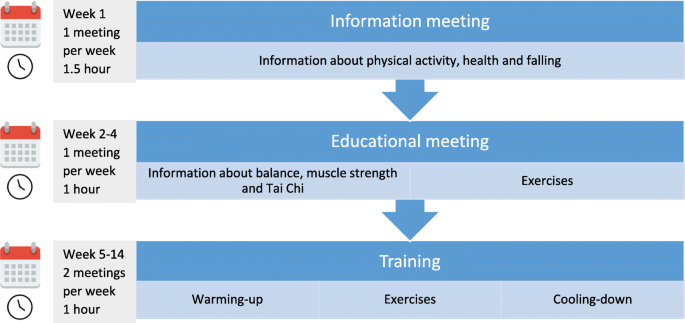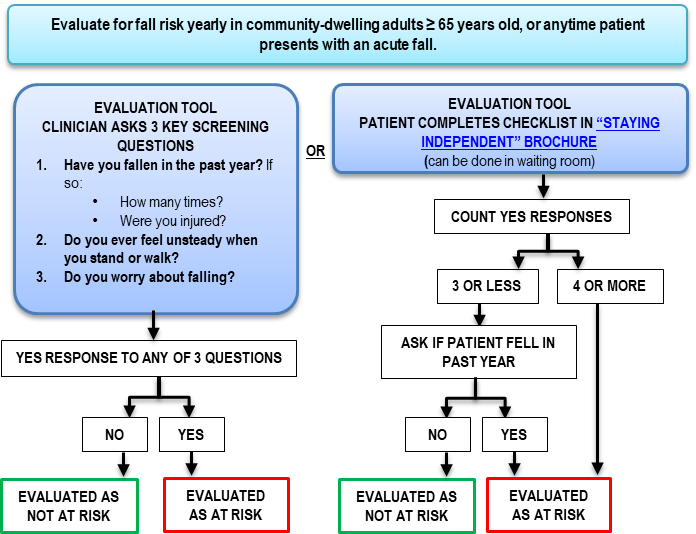A Biased View of Dementia Fall Risk
A Biased View of Dementia Fall Risk
Blog Article
Some Known Details About Dementia Fall Risk
Table of ContentsGet This Report on Dementia Fall RiskThe Basic Principles Of Dementia Fall Risk What Does Dementia Fall Risk Mean?Some Of Dementia Fall Risk
An autumn threat assessment checks to see how likely it is that you will certainly fall. The evaluation normally includes: This includes a collection of inquiries about your overall health and wellness and if you've had previous falls or issues with balance, standing, and/or strolling.STEADI includes screening, examining, and treatment. Treatments are referrals that might reduce your risk of dropping. STEADI includes 3 steps: you for your danger of falling for your threat elements that can be boosted to try to prevent drops (as an example, equilibrium problems, impaired vision) to lower your danger of dropping by using reliable techniques (as an example, offering education and learning and resources), you may be asked several concerns consisting of: Have you fallen in the previous year? Do you really feel unsteady when standing or walking? Are you stressed over dropping?, your service provider will certainly examine your stamina, balance, and gait, making use of the complying with autumn analysis devices: This examination checks your gait.
Then you'll rest down again. Your supplier will inspect how lengthy it takes you to do this. If it takes you 12 secs or more, it might suggest you go to higher risk for an autumn. This test checks stamina and equilibrium. You'll being in a chair with your arms went across over your upper body.
Relocate one foot midway onward, so the instep is touching the huge toe of your other foot. Relocate one foot completely in front of the other, so the toes are touching the heel of your other foot.
Some Known Factual Statements About Dementia Fall Risk
A lot of falls happen as an outcome of multiple adding factors; consequently, managing the danger of dropping begins with determining the variables that contribute to fall danger - Dementia Fall Risk. Several of the most relevant danger variables include: History of prior fallsChronic clinical conditionsAcute illnessImpaired gait and balance, lower extremity weaknessCognitive impairmentChanges in visionCertain risky medicines and polypharmacyEnvironmental factors can also boost the threat for drops, including: Inadequate lightingUneven or damaged flooringWet or slippery floorsMissing or damaged handrails and get hold of barsDamaged or poorly equipped tools, such as beds, mobility devices, or walkersImproper usage of assistive devicesInadequate guidance of the individuals living in the NF, including those who display aggressive behaviorsA successful autumn danger administration program calls for a comprehensive scientific analysis, with input from all participants of the interdisciplinary group

The care strategy need to also consist of treatments that are system-based, such as those that advertise a secure setting (ideal lights, handrails, get bars, etc). The effectiveness of the interventions ought to be assessed periodically, and the care strategy changed as needed to show modifications in the fall threat assessment. Executing a fall risk monitoring system making use of evidence-based finest method can reduce the prevalence of drops in the NF, while limiting the potential for fall-related injuries.
Everything about Dementia Fall Risk
The AGS/BGS guideline advises screening all grownups matured 65 years and older for autumn threat annually. This screening consists of asking clients whether they have actually dropped 2 or more times sites in the previous year or sought clinical attention for a loss, or, if they have actually not dropped, whether they really feel unstable when walking.
People who have dropped when without injury should have their balance and gait examined; those with stride or balance abnormalities must receive extra evaluation. A background of 1 site here fall without injury and without stride or equilibrium problems does not necessitate more evaluation past continued annual loss threat testing. Dementia Fall Risk. A fall danger analysis is required as component of the Welcome to Medicare assessment

The 9-Minute Rule for Dementia Fall Risk
Documenting a falls background is just one of the quality indications for fall prevention and administration. A critical component of danger analysis is a medication review. A number of courses of medicines raise loss threat (Table 2). copyright medications specifically are independent predictors of falls. These medicines often tend to be sedating, alter the sensorium, and impair balance and stride.
Postural hypotension can often be eased by reducing the dosage of blood pressurelowering medications and/or quiting drugs that have orthostatic hypotension as a negative effects. Use above-the-knee support pipe and copulating the head of the bed boosted may also lower postural decreases in high blood pressure. The suggested components of a fall-focused physical examination are shown in Box 1.

A Yank time higher than or equivalent to 12 seconds recommends high autumn threat. Being unable to stand up from a chair of knee height without making use of one's see it here arms indicates boosted fall danger.
Report this page